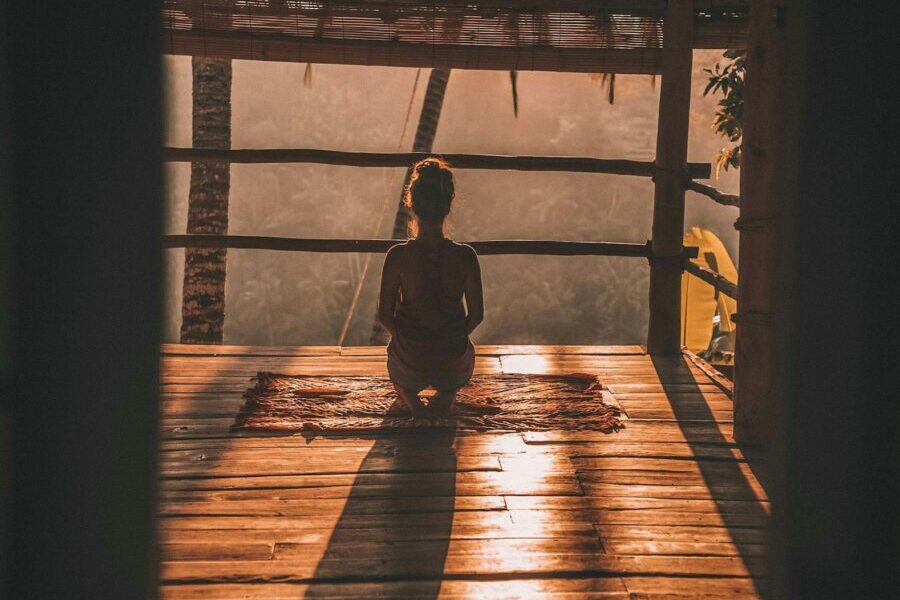In the hustle and bustle of our daily lives, finding moments of tranquillity can seem like an elusive dream. However, nestled within the chaos lies a simple yet profound practice: mindfulness.
At the heart of this practice is the art of connecting with our breath, a timeless and accessible technique that can anchor us in the present moment and soothe even the most turbulent of moments in our lives. Whether you are looking to decompress from the working environment or from the work itself, mindfulness can be practiced in just a few minutes to provide a lasting sensation of clarity and peace.
Here are my top tips that you can try whether you are in your office or at home.
Connect with your breath
The easiest, quickest, and most effective way to be calm in moments of stress is to connect with your breath. The majority of the time we are unaware of our breathing, but as we’re always breathing (hopefully!) it’s a great way to provide an anchor to the present moment. Taking our attention away from the chaos around us and to our breath gives us the space we need to evaluate the situation we are in.
A study[1] published in 2023 based on a meta-analysis of controlled trials concluded that there is a definitive link between the way we breathe and anxiety disorders. When we slow down our breathing our heart rate slows and the parasympathetic nervous system activates the body’s “rest and digest” process, helping you to calm down and think more rationally.
Box breathing is a great technique to use as the counting give you something to focus on. Here’s how you do it:
- Sit comfortably
- Breathe in for a count of four
- Hold your breath in for a count of four Breathe out for a count of four
- Hold your breath for a count of four Repeat four times, ideally a few times a day
If you experience any dizziness, stop and breathe normally.
Try connecting with your breath in your next meeting, before you respond to a difficult email, before you ask for a deadline extension. Notice how this changes how you would have approached that moment. Notice how it makes you feel and how others may have responded differently to your expectation.
Mindful walking
The best thing about mindful walking is that you don’t have to have lots of space and because of that you can do it whatever the weather.
Mindful walking is about bringing all your senses to the experience of walking. It’s about breaking each micro movement in walking down to its smallest element. Notice how your weight shifts as you move each foot and your centre of gravity changes as you lift one foot off the ground. Observe which parts of your body move in time with, or in opposition to, your feet. Imagine moving in slow motion with conscious awareness of each movement.
It’s only when we try this technique that we realise how unconscious and automatic walking is – and how incredible our brains are at programming these activities.
Whilst a yoga mat might be slightly too small and impractical to roll out in the workplace, try mindfulness walking to the water cooler or to the window. Even better, take 20 minutes to go outside and walk mindfully up the street. The distance travelled here is not important. Nor is company!
A study[2] in 2021 found that walking mindfully outside; whether it’s in a natural environment or an urban area can help improve sleep quality and improve your mood.
Mindful eating
Just as mindfulness walking brings our attention to each of our senses when we walk, mindful eating does the same when we eat. All too often we see food as an opportunity to refuel, rather than an experience to savour slowly. The majority of us are guilty of eating on foot as we rush to make a meeting, or nibble on a sandwich while we work through a backlog of unread emails.
Research[3] shows that there is a significant positive correlation between mindful eating and mental wellbeing. In addition, mindful eating is both pleasurable and satiating.
Many mindfulness courses demonstrate the power of mindful eating to activate senses that we don’t notice in our rush to finish our food using The Raisin Mediation. You can also try it with a cherry tomato or a small piece of chocolate. Whilst a guided meditation is quite a treat you can also do this on your own.
Take your raisin, piece of chocolate or cherry tomato and start by looking at it as if you were an alien that had never come across one before. Notice the colours, patterns. Feel the textures and temperature. Be curious.
Use your noise to pick out any aromas. What do they remind you of? When you put it in your mouth, how does it feel, taste? As you bite into it what do you notice about the texture, the taste, the smell? How do these things change as you chew. Carry on with these observations as you finish eating it. How does this experience compare to other times you have eaten it?
This is a truly incredible experience, and, in all likelihood, it will be the best raisin / chocolate / tomato that you have tasted – and if it’s not that maybe poses a different question!
Once you have tried this you can take this experience to any of the meals that you eat. Notice how much more enjoyable the meals are and how much better you feel afterwards. Even if you have to eat your sandwich at your desk, this can make the difference you need to get you through the afternoon.
Mindful creativity
The Covid-19 pandemic saw huge growth in people taking up a variety of creative activities. Research at the time found that spending more time gardening, doing woodwork, DIY, arts and crafts was associated with less anxiety and depression and greater life satisfaction.[4]
Creativity is about connecting with the curiosity we all have as children. Toddlers and young children create without any consciousness and with complete confidence that they can create. We all have that creativity inside us still. It’s about finding a way to reconnect with it. One person’s skills differ from another’s – as will their creativity. Throw out pre-conceptions of what being creative is and get stuck in with something that you enjoy.
When we do something creative, we often find ourselves in a flow state, where time passes without us knowing where to! This makes it the perfect way to find peace in our too-busy lives.
If you need some inspiration, start by going back to the things you used to do when you were younger. Try them out again. Join a club, sign up to a course, buy a book. Get messy. Be free and see where it takes you.
And don’t think that creativity isn’t something that is present in the workplace. Marketeers are creative, but a sales team will create unique ways of connecting with their client. Get out a whiteboard and draw. Brainstorm and build on each other’s ideas. Put a pot of colouring pencils in meeting rooms and see what happens!
It is important to recognise when we need to take some time to pause and recharge. It can be difficult to strike a balance when life is throwing demands from all directions, but you have the power to say no and apply boundaries where suitable. No matter how big or small your worries are, try at least one of these techniques and discover what mindfulness can do to inspire creativity and take control of how you work.
References
[1] Breathwork Interventions for Adults with Clinically Diagnosed Anxiety Disorders: A Scoping Review
[2] Effectiveness of a mindful nature walking intervention on sleep quality and mood in university students during Covid-19: A randomised control study
[3] Mindful Eating and its Relationship with Mental Well-being
[4] Creative leisure activities, mental health and well-being during 5 months of the COVID-19 pandemic
Claire Renée Thomas
Claire Renée Thomas, founder of Reaching My Best, is a mindset and mindfulness coach, and one of the few certified mental fitness coaches in the UK. Her passion and focus is on guiding and empowering women to unlock their full potential and overcome any obstacles they may be facing personally or professionally. Her mission is not just to guide individuals to greater fulfilment, but to empower them to lead rewarding, purpose-driven lives.



